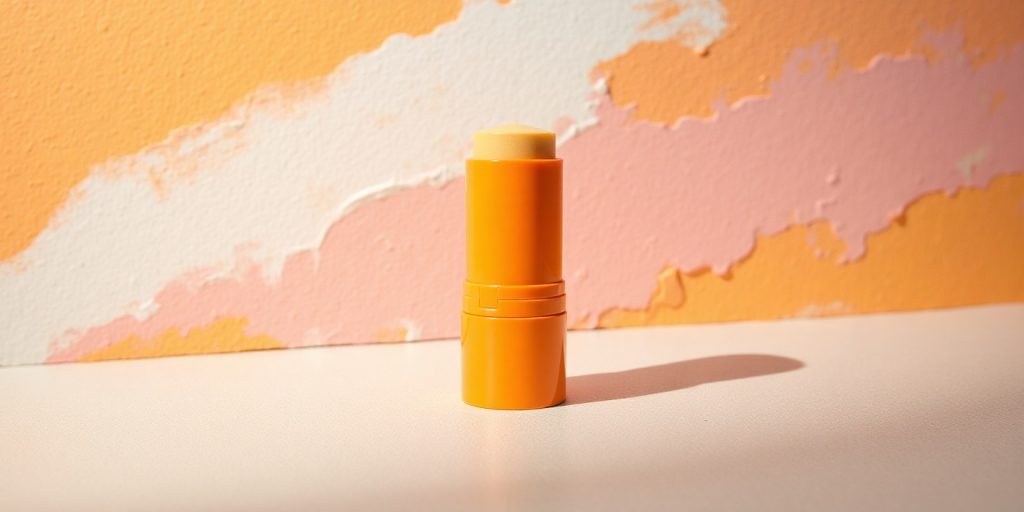As the cosmetics industry continues to evolve, solid formats are emerging as a front-runner in product innovation—especially within the sun care segment. From waterless beauty trends to the demand for eco-friendly, travel-ready solutions, solid sunscreen sticks have captured the attention of both formulators and consumers alike.
But while these innovative formats offer clear advantages, they also introduce a technical concern that often goes overlooked: oxidative degradation. When dealing with formulas rich in lipids, protecting the product from oxidation becomes a critical part of development. Here’s why the right natural antioxidant system, like Tocopherols, can make all the difference.
The Waterless Movement and the Rise of Solid Sunscreens
Today’s beauty consumer is smarter and more sustainability-conscious than ever. That’s one of the reasons behind the surge in waterless cosmetic formats, which help reduce water consumption during production and extend product shelf life by minimizing the need for additives.
Solid sunscreen sticks fit perfectly into this eco-aware shift. They’re compact, convenient, and easy to apply—especially to delicate areas like the face or around the eyes. However, the same lipophilic ingredients that give these formulas their emollient and nourishing properties are also their greatest vulnerability.
The Oxidation Problem in Lipid-Rich Formulas
One of the defining characteristics of solid sunscreen sticks is their high content of lipophilic ingredients, such as vegetable oils, waxes, and butters. These materials are essential to provide the smooth, emollient texture that makes the product pleasant to apply and effective in forming a protective film over the skin. However, this lipid-rich matrix comes with a major drawback: it is highly prone to oxidative degradation.
Oxidation occurs when unsaturated fatty acids react with oxygen, a process that can be accelerated by light, heat, and the presence of metal ions. In sunscreen sticks, these reactions can be especially problematic because:
- Oxidative rancidity alters the chemical composition of the oils and fats, degrading not only the sensorial properties of the formula but also the efficacy of active ingredients, such as UV filters.
- The product may develop unpleasant odors, color shifts, or a grainy or sticky texture, all of which compromise the consumer experience and can lead to negative perceptions of the brand.
- Storage and transport conditions, especially in warmer climates, further increase the rate of degradation if no protective measures are in place.
- Shelf life is drastically reduced, affecting distribution timelines, retailer acceptance, and regulatory compliance in some markets.
This oxidative instability not only threatens the product’s quality but also increases the risk of consumer dissatisfaction, batch recalls, and reputational damage for brands. For these reasons, oxidation control is a critical part of formulation strategy—especially for waterless and solid formats, where additives and stabilizers are typically kept to a minimum.
Why Tocopherol-Based Natural Antioxidants Are the Best Solution
When selecting an antioxidant strategy for lipid-rich systems, not all solutions are created equal. Synthetic antioxidants (like BHT or BHA) have historically been used in cosmetics, but are increasingly scrutinized by regulatory bodies and rejected by consumers seeking natural, clean-label products.
This shift has positioned Tocopherols, a family of compounds known as Vitamin E, as the preferred choice for formulators aiming to balance efficacy and natural origin. Tocopherols act as chain-breaking antioxidants, interrupting the lipid peroxidation process by scavenging free radicals before they can propagate the oxidative reaction.
What makes Tocopherol-based antioxidants particularly well-suited for solid sunscreen sticks includes:
- High affinity for lipophilic environments: Tocopherols dissolve easily in oils and fats, making them ideal for homogeneous distribution in solid matrices.
- Stability under processing conditions: Tocopherols remain stable at the moderate temperatures typically used in cosmetic stick manufacturing, preserving their functionality during production.
- Synergistic potential: Tocopherols can be combined with other antioxidants (e.g., ascorbyl palmitate or rosemary extract) to enhance efficacy through synergistic effects.
- Regulatory and consumer acceptance: Naturally derived tocopherols are globally accepted in natural and organic cosmetics (e.g., COSMOS-certified) and align with consumer preferences for clean, recognizable ingredients.
Ultimately, tocopherol-based antioxidants offer a science-backed, market-aligned solution for maintaining the oxidative stability, performance, and sensorial integrity of solid sunscreen formulations—without compromising on natural positioning.
For more on how antioxidants improve formulation stability, check out: How to Prevent Oxidation in Natural Cosmetic Formulations
A Targeted Approach for Solid Suncare
Formulating effective, long-lasting solid sunscreens requires not only careful selection of UV filters and emollients, but also a thoughtful antioxidant strategy. Identifying an ingredient that can withstand the specific challenges of high lipid content and environmental exposure is crucial for long-term product success.
In this context, solutions like BIOXAN®, developed by BTSA, offer a reliable option. Based on natural tocopherols and designed specifically for lipid-rich cosmetic systems, they provide targeted protection against oxidative stress, helping formulators maintain both the performance and integrity of their products over time.

